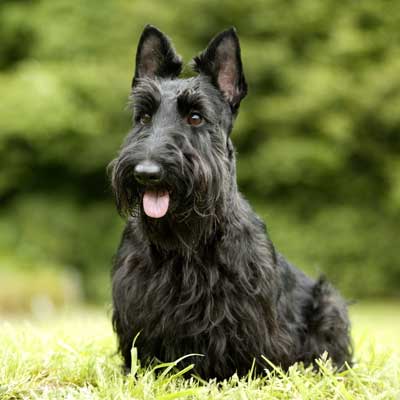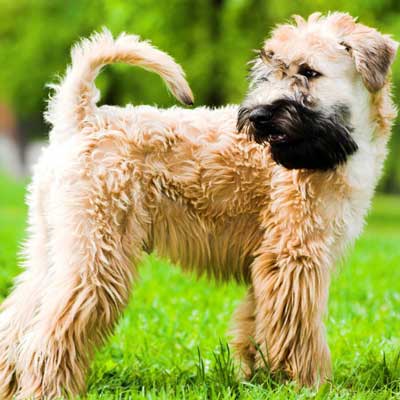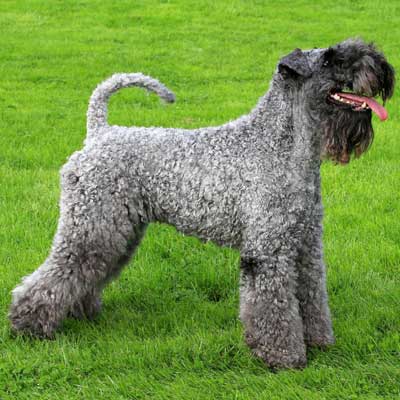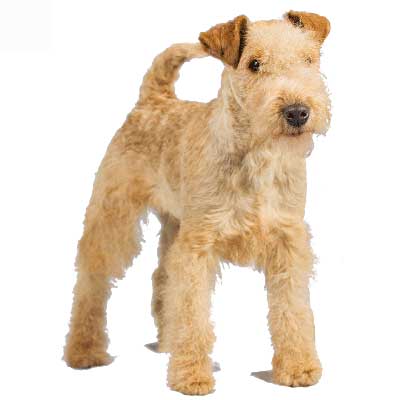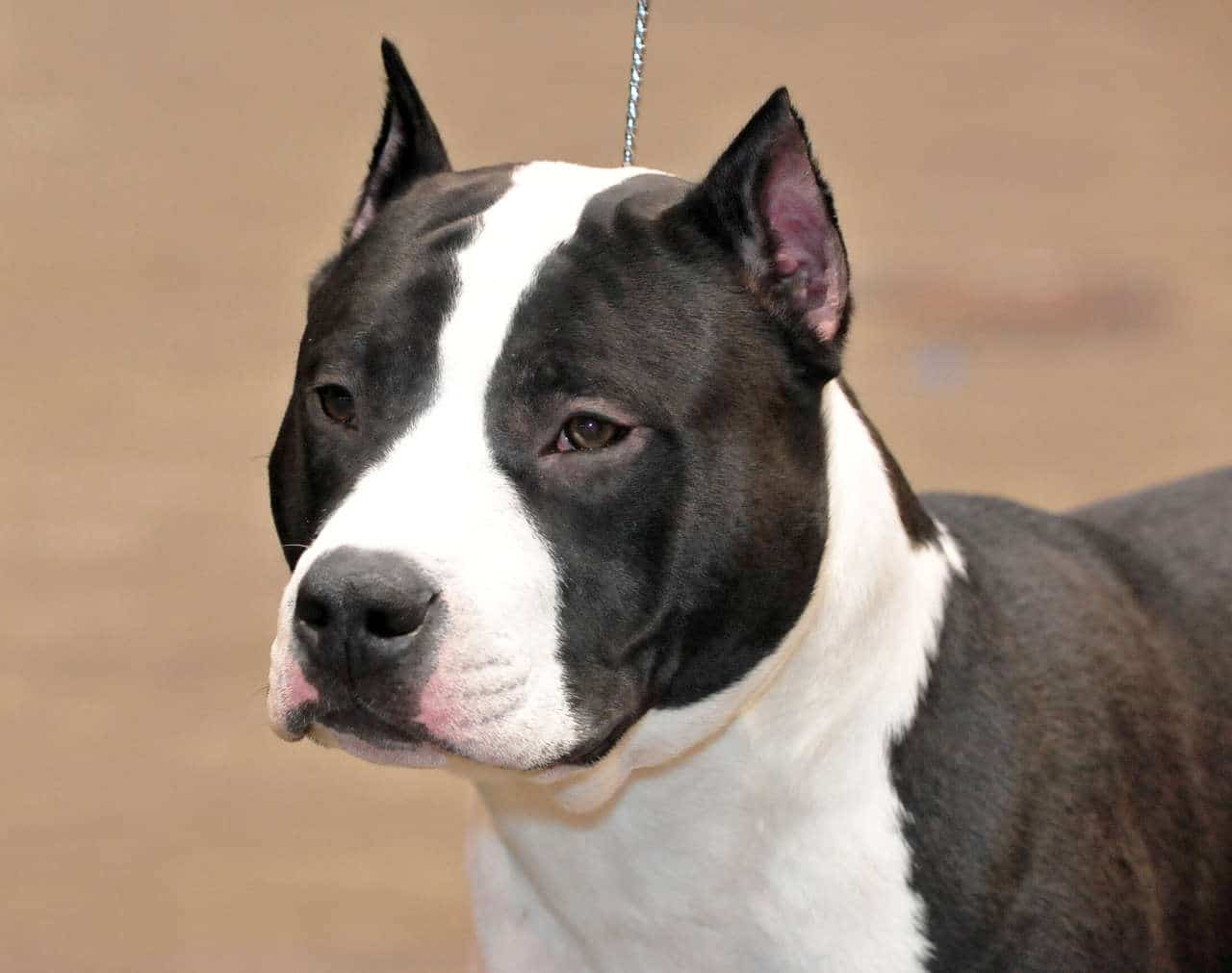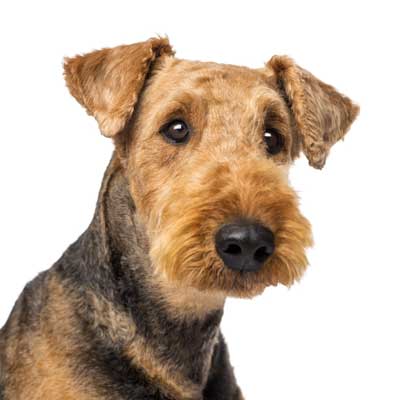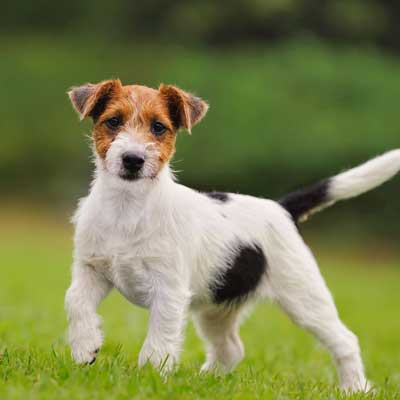Scottish Terrier
Independent and reserved, but courageous and highly intelligent
The Scottish Terrier Club was formed in 1882, a year after the first standard for the breed was drawn up, and just three years after the start of the breed as we know it today by Capt Gordon Murray. He was strongly supported by the founder and first chairman of the Kennel Club, Mr Sewallis Evelyn Shirley.The public image of this short-legged terrier from the Highlands is often that of a dour Scot, but to his family and friends he is affectionate and cheerful although he will soon rouse himself at the slightest sound, with protectiveness as he prepares to guard his house and home.
-
Head
Long without being out of proportion to size of dog.
Carried on muscular neck of moderate length showing quality. -
Head - cranial region
Skull: Nearly flat. Length of skull enabling it to be fairly wide and yet retain narrow appearance.
Stop: Slight but distinct stop between skull and foreface just in front of eye. -
Head - facial region
Nose: Black. Large, and, in profile, the line from nose towards chin appears to slope backwards.
Muzzle: Foreface strongly constructed and deep throughout.
Jaws / Teeth: Teeth large with perfect and regular scissor bite, i.e. upper teeth closely overlapping the lower teeth and set square to the jaws.
Cheeks: Cheek bones not protruding.
Eyes: Almond-shaped, dark brown, fairly wide apart, well set under eyebrows with keen, intelligent expression.
Ears: Neat, fine texture, pointed, erect and set on top of skull but not too close together. Large, wide-based ears highly undesirable -
Neck
Muscular and of moderate length showing quality. -
Body
Topline: Straight and level.
Back: Proportionately short and very muscular.
Loin: Muscular and deep.
Chest: Fairly broad and hung between forelegs. Well rounded ribs flattening to deep chest and carried well back. Powerfully coupling ribs to hindquarters. -
Tail
Moderate length giving general balance to dog, thick at root and tapering towards tip. Set on with upright carriage or slight bend. -
Forequarters
General appearance: Brisket well in front of forelegs.
Shoulder: Long, sloping.
Elbow: Must not be out nor placed under body.
Forearm: Straight, well boned.
Metacarpus (Pastern): Straight.
Forefeet: Good size, well padded, toes well arched and close-knit, forefeet slightly larger than hind feet. -
Hindquarters
General appearance: Remarkably powerful for size of dog. Big, wide buttocks.
Thigh: Deep.
Stifle (Knee): Well bent.
Metatarsus (Rear pastern): Hocks short, strong, turning neither in nor out.
Hind feet: Good size, well padded, toes well arched and close-knit, hind feet slightly smaller than forefeet. -
Gait / Movement
Smooth and free, straight both back and front with drive from behind and level gait throughout -
Coat - hair
Close-lying, double coat; undercoat short, dense and soft; outer coat harsh, dense and wiry, together making a weather-resisting covering. -
Coat - colour
Black, wheaten or brindle of any shade. -
Size
Height at the withers: 25 – 28 cms.
Weight: 8,5 - 10,5 kgs. -
Faults
Any departure from the foregoing points should be considered a fault and the seriousness with which the fault should be regarded should be in exact proportion to its degree and its effect upon the
health and welfare of the dog. -
Disqualifying faults
• Aggressive or overly shy dogs.
• Any dog clearly showing physical or behavioural abnormalities.
N.B.:
• Male animals should have two apparently normal testicles fully descended into the scrotum (this expression is obligatory in every standard).
• Only functionally and clinically healthy dogs, with breed typical conformation should be used for breeding.

